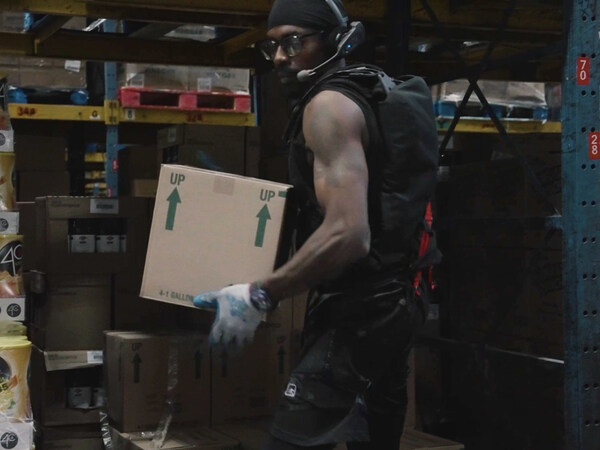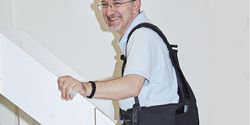Landmark Study Reveals Wearable Robotics Significantly Boost Safety and Efficiency in Industrial Environments
The four-year study, the first of its kind, tracked ergonomics, safety, and injury metrics across more than 65 million lifts at over 40 sites in five industries: Construction, Food & Beverage, Logistics, Manufacturing, and Retail.
Exploring the Future of Machined Exoskeleton Technology in Medical Rehabilitation
The future of aluminum exoskeleton robot technology holds great promise in the medical rehabilitation industry.
Regaining the Ability to Walk Independently
Walking without crutches - this is something that people with certain neuromuscular disorders dream of. With the exoskeleton "Autonomyo", this dream can now be made a reality.
Medical Exoskeleton for Rehabilitation
Harmonic Bionics has developed a patented robotic actuator, which uses a load cell that is mechanically isolated from any extraneous loads. The result is that each load cell can sense the force exerted by only the joint of the robot it is mounted to.
A Fantastic Feeling - Lightweight Exoskeleton
Zurich-based startup MyoSwiss has developed a lightweight exoskeleton that works like an e-bike for the legs. It assists the wearer's movements with electronic reinforcement.
The Future of Robotic Exoskeletons: Roadblocks and Recent Advances
Exoskeletons have remarkable potential. As with their science fiction counterparts, these machines can amplify their users' strength, letting them lift heavier objects with less effort.
AN IDEA STRENGTHENS THE BACK OF THE WORLD
The turning of the lead screw transfers the motor power to the spring. It presses from the lower belt on the upper belt, supports the upper body and relieves the lumbar spine.
How to Design an Exoskeleton
An exoskeleton must be lightweight, compact, powerful, reliable, and easy to use - what could be easier? Many developers around the world dabble in this discipline with different degrees of success.
Ironhand superpower under control
Ironhand ® from the Swedish company BIOSERVOTECHNOLOGIES is a soft, active exoskeleton for the hands and fingers. Normally, a gripping action is made possible by the muscles in the lower arm and hand.
Wearable Device Preserving the Operators' Health During Assembly Operations
Comau's MATE exoskeleton was chosen by IVECO to reduce the fatigue on the upper limbs suffered by the operators engaged in the heaviest activities inside the various production departments of the company.
How do Exoskeletons Impact the Workplace?
Although some of the work in factories is automated, human input is still crucial and remains at the heart of many operations, including value-added and repetitive ones, but which require a high level of precision.
Exoskeletons and Exo-suits: Exploring the Scope of Wearable Robots
However, studies in the field of wearable robots are opening up innumerable possibilities of telepresence and telemanipulation that could change the degree and nature of functionality and productivity in humans.
Me and the Machine
Paralyzed people can learn to walk again with the aid of electromechanical exoskeletons. However, it's not easy. It takes a lot of engineering and hard training.
Hyundai Motor Group Develops Wearable Vest Exoskeleton to Alleviate Burden in Overhead Work
- New Wearable Vest EXoskeleton (VEX) is up to 42% lighter than competing products
- The VEX functions without the need for a battery by imitating human shoulder joint and using multilink lift assistant module
Compact Mechatronic Drive for Robotic Applications
This document presents a new optimized integration of a compact gear reducer, specific designs of BLDC motor and magnetic absolute position sensor for high torque per volume demanding applications.
Records 1 to 15 of 34
Featured Product

Model TR1 Tru-Trac
The Model TR1 Tru-Trac® linear measurement solution is a versatile option for tracking velocity, position, or distance over a wide variety of surfaces. An integrated encoder, measuring wheel, and spring-loaded torsion arm in one, compact unit, the Model TR1 is easy to install. The spring-loaded torsion arm offers adjustable torsion load, allowing the Model TR1 to be mounted in almost any orientation - even upside-down. The threaded shaft on the pivot axis is field reversible, providing mounting access from either side. With operating speeds up to 3000 feet per minute, a wide variety of configuration options - including multiple wheel material options - and a housing made from a durable, conductive composite material that minimizes static buildup, the Model TR1 Tru-Trac® is the ideal solution for countless applications.















